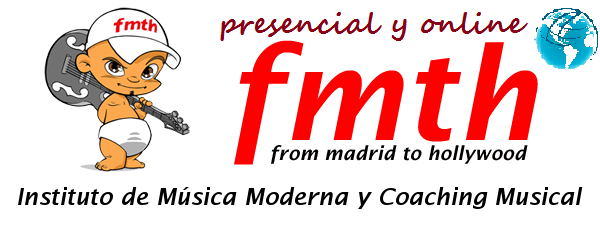A
good guitar solo (or any instrumental solo) in popular music
effectively serves three purposes:
- It gives the vocalist a break from singing, a chance to catch his or her breath before launching into the second half of the song.
- It gives the listener a break from the vocal line and, in some cases, the verse/chorus structure that leads up to the solo.
- It gives the instrumentalist a chance to shine, to occupy the spotlight ordinarily reserved for the vocalist, to show his or her chops.
There
is an art to good soloing. Some amount of technique is needed.
Attitude is a must. Respect for the song, for one’s
fellow musicians, and for the listener helps. When a player steps
into a solo, he is constantly straddling the fine line between
self-expression and self-indulgence. The intended impact on the
audience (including the other performers who have to listen to the
solo) is one of, "Hey, that was a fun little jaunt; let’s get
back on the highway and finish our journey." A bad solo, on the
other hand, elicits more of a "Geez, what the heck are we doing
here? Let’s go already."
The
latter is undesirable for many reasons. First and foremost, it
irritates the crowd, which is the cardinal sin of performing
live. Second, it disrespects the fellow musicians. If you’re going
to take the spotlight, make a meaningful statement. Don’t
just noodle around without aim (unless that is your specific intent;
there is a difference between conscious aimlessness, if you will, and
wanking for the sake of wanking). Finally, it diminishes the impact
of the song as a whole. In writing and performing songs, anything
that doesn’t add value needs to be removed. As Johnny Cochrane
might say, "If it doesn’t fit, you must omit."
Structurally,
there are several different ways a solo can work within the
boundaries of a song:
- It can mirror the vocal melody, providing the listener with a familiar motif but a different voice.
- It can use the vocal melody as a starting point and build countermelodies based on the original motif.
- It can create its own motif that has little or nothing to do with the rest of the song.
The
first two, if done skillfully, make for fun and relatively easy
listening. Think of early rock ‘n’ roll: Bill Hailey and the
Comets, Elvis, early Beatles ("And I Love Her" contains a
beautiful short solo based on the vocal melody). The third is a bit
more thought provoking and demands more of the listener (and the
players, for that matter). The interlude in Queensryche’s "Silent
Lucidity" is a song into itself. Those chord changes and melody
appear nowhere else in the song. The first time a listener hears it,
it’s a little shocking because there is no way to predict its
presence in the piece based on what has come before it. But that
shock is also the source of delight, and it’s why the solo still
sounds fresh after repeated listenings.
Another
guitar solo that serves as a "song within a song" comes in
Guns ‘N’ Roses’ "Sweet Child O’ Mine." This
is a particularly relevant example to me, as our singer does a
terrific Axl Rose and I would like nothing more than to be able to
play this song live.
The
structure of the song is pretty simple. Three chords in the verse,
three more in the chorus (two of which also are contained in the
verse). So far we’ve got four chords. No problem, right? Well,
there’s the matter of the hypnotic riffs that weave their way
throughout the song, but those aren’t too complicated. They require
a certain amount of dexterity and stamina to play, but they’re not
difficult.
Then
along comes the solo, wherein we are introduced to a slew of
different chords and a melody that has nothing to do with the rest of
the song. That’s from the listener’s perspective. The player,
meanwhile, is confronted with a piece that moves effortlessly among
various positions on the neck of the guitar and sings. The lines are
ridiculously fluid, there are some funky rhythms to negotiate
(involving that chucka-chucka sound of attacking the strings with the
pick hand while muting them with the fret hand), and there is one
particularly fast
run
at the apex
of the solo (where everyone hammers on the same chord for several
measures and the drums build to a crescendo, before the song moves
into yet
another
chord progression).
It’s
this part of the solo that is a pain in the rear and, not
coincidentally, what makes the solo what it is. I plug into my
digital 4-track, set the tempo to about 105 beats/minute, and play
part of a phrase from that run over and over again. We’re talking
nine notes here. If I can play it five times without messing
up (this could be flubbing a note or even ending up with my hand in
the wrong position; if I have the wrong finger on that final note, I
can’t get to the next part of the phrase), then I bump it up to 108
beats/minute and repeat the process.
I’ve
always been a "wing-it" kind of player when it comes to
solos. Find the key and go for it. Eventually you’ll stumble onto
something that works and you’ll add or subtract to that as needed
for each individual performance. I liked to think that I was being
spontaneous by playing that way. And I probably was. And I’ll
continue to play that way a lot of the time. But there are songs for
which you absolutely have to play the recorded solo (AC/DC’s "Shook
Me All Night Long"). Although playing someone else lines might
seem less creative or spontaneous, the individual guitarist will
always bringing something of himself to the work. The challenge is to
have the discipline to (a) learn the part and (b) make a
personal statement while remaining true to the original message.
I
think I’ve made it all sound a great deal harder than it actually
is. Or maybe not. But the point is, it’s worth the effort. One of
the more satisfying moments a performer can have is to completely
nail a solo. In my experience, that almost never happens (there’s
always something you could have done better), but when it does, it’s
a real good feeling.
Mon, Feb 9, 2004
By Geoff Young
PD: It is weird, I bought my electric guitar near the stadium of San Diego Padres...
does it mean something? XD (Santiago)












No hay comentarios :
Publicar un comentario